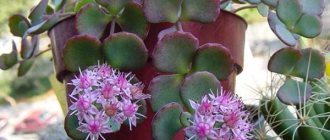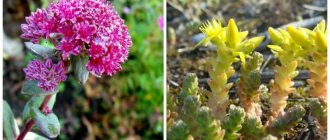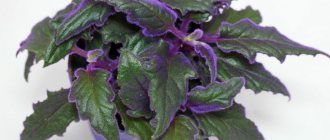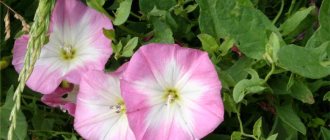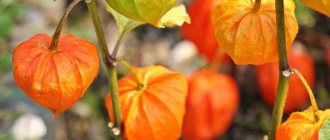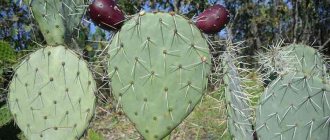Sedum is one of those plants that do not have bewitching beauty, but delight in their unusualness and grace. Thanks to its huge variety, succulents are used in landscape design to decorate alpine slides, mixborders and rockeries. Tall varieties of sedum look great in group plantings. What does this decorative perennial look like and how to properly care for it?
Popular varieties
Each variety of sedum has its own twist and is in demand among gardeners. However, there are varieties that have been popular for more than 5 years.
Sedum Kamchatka
A loose bush consisting of erect shoots 30-35 cm high. The length of the dark green elongated leaves is 4-5 cm. The edges at the base of the plate are smooth, and on the opposite - jagged. Yellow flowers up to 2 cm in diameter form dense inflorescences. The size of one umbrella is 11-13 cm. It enters the flowering phase in June and emerges after 2-3 weeks.
Sedum caramel Kamchatka
A perennial plant with vertical stems 20 cm high. The ellipsoid leaves have a blunt edge near the petiole and a toothed edge at the apex. Small flowers are orange-yellow. Corymbose inflorescences form in June and decorate the plants for 25-30 days.
Sedum purple carpet
A perennial herbaceous plant, which was discovered by the German botanist M. Bieberstein in the 19th century. The succulent is a compact bush 15-20 cm high and 40-50 cm in diameter. Densely leafy stems spread along the ground. Bright green oblong leaves are arranged in two rows.
The length of the plate is 5-6 cm, width - 3-4 cm. The flowers are red with pointed petals. Purple sedum blooms for 1.5-2 months, starting in the first half of summer. Succulent Sedum purpurea is grown from seeds according to the same principle as all succulents.
Sedum Eversa
Compact perennial shrub. By the beginning of autumn, the red-brown shoots become woody. The round, small leaves are bluish-gray and thick. Flowers, painted pink, are collected in inflorescences. The flowering period begins in July and lasts about two months. In autumn the plant sheds its leaves.
Sedum is beautiful
Perennial with creeping stems. The leaf blades are thick, turgorous, and bluish. Prefers to grow in soil made from leaf and turf soil, sand (1:1:2). Grow in low pots.
Transfer
Sedums are replanted infrequently: young specimens once every 2 years, adults that have not lost their decorative properties - once every 3-4 years in the spring.
Plants should not be replanted unless absolutely necessary, since the leaves of some species may fall off at the slightest touch. If the flower is disturbed, the stems may become bare and the attractiveness will be lost.
The sedum tolerates transplantation normally; if necessary, the procedure can be carried out even during flowering. Since the plant has a shallow root system, the pot should be wide but shallow
It is important not to forget about a good drainage layer
Planting sedum seedlings
Only patient gardeners can grow succulents using seeds. The process requires a number of manipulations, and lasts much longer than propagation using one of the vegetative methods.
Sedum growing from seeds when to plant? Planting of sedum seeds is carried out in March-first half of April according to the following plan:
Prepare the soil mixture. Mix leaf and turf soil, sand and peat in a ratio of 1:1:1:1. No matter what variety the sedum you like belongs to, sowing seeds for seedlings is carried out as follows:
- Place a handful of substrate on the bottom of the plate and level it. Seeds are sown on the surface of the soil and sprayed with water.
- The container is placed in a bag or covered with glass and sent to the refrigerator (vegetable section) for 2 weeks.
- Stratified seeds are sown in containers, and the soil is moistened with a spray bottle. To make it easy for tender seedlings to break through to the surface, the planting material is crushed over the surface of the substrate and sprinkled with a thin layer of sand.
- The container is covered with film or glass.
To prevent fungi from appearing on the soil and planting material, the minigreenhouse is ventilated from time to time. At room temperature, sedum seedlings make their way to the surface 2-4 weeks after sowing. Plants that have formed 1-2 true leaves are transplanted into separate containers.
2 weeks before the expected date of the next picking, the seedlings are hardened off. Young plants will experience less stress and will take root better in their new location if the time they spend outdoors is gradually increased. Hardening starts from 1-2 hours and continues up to 24 hours.
Planting to a permanent place is carried out in the third ten days of May. When propagating sedum by seeds, keep in mind that the plant will not bloom in the first summer.
For a flower like sedum, growing from seeds is one of the effective ways to get an exotic plant for your garden.
Top dressing
In nature, sedums do not grow in the most fertile areas. For this reason, they do not need any fertilizers in order to actively grow and subsequently bloom.
However, a small amount of humus or compost soil will not harm the young plant and will only speed up its development.
But with other fertilizers you should be careful .
Various nitrogenous fertilizers can lead to sad consequences: rotting of stems, leaves and roots.
Phosphorus-potassium fertilizers should be used in low concentrations and infrequently.
How to plant sedum in open ground
Whether the flower will take root or not depends on how the planting is done. But before you begin the decisive manipulation, you need to carefully prepare.
How to choose a seedling
The best place to buy sedum flowers is at a nursery. For planting, you should choose only healthy seedlings without mechanical damage and traces of diseases and pests. The leaves should be alive and turgor, and the soil in the container should be clean.
When choosing a plant, it is worth considering the fact that low-growing varieties are more suitable for creating living carpets, and tall ones are more suitable for single plantings.
In our nursery in Tatarstan you can purchase high-quality sedum seedlings for every taste. The company delivers orders throughout Russia, so you can buy sedum in Moscow or any other city if you are a wholesale buyer.
Selecting a location
Like most succulents, sedum grows well in sandy and rocky soils. Despite this, the plant can live on any other soil that drains water well. You should not plant a flower in an area with marshy soils or in lowlands where water often accumulates.
As for lighting, it is better to plant sedum in a well-lit place, unless the description of the purchased specimen says otherwise. It is undesirable for shrubs and trees to grow nearby.
Sedum planted in the shade quickly loses its decorative effect. The leaf blades become thinner and the stems become elongated.
Soil preparation
Most varieties of sedum are not demanding on the composition of the soil. At the same time, some ground cover varieties prefer to grow in garden soil rich in microelements, while others thrive in loam or sandstone.
For example, sedum sedum Purple carpet belongs to the first category, sedum prominent - to the second. Therefore, before buying the sedum you like, you need to find out whether it will be possible to fulfill the requirements of the plant.
A universal soil mixture for succulents is prepared from leaf and turf soil, sand, rotted manure mixed in a 1:1 ratio. A handful of wood ash is added to the finished substrate.
Landing dates
Sedum is planted in the second ten days of May, when the risk of return frosts is reduced to zero. In the southern regions, the favorable time comes earlier, and in the northern regions - later than the specified date.
The flower is planted following this pattern:
- At the selected location, dig holes with a diameter of 50 cm and a depth of 20 cm. To prevent plants from interfering with each other’s growth, 20 cm of free space is left between them.
- A layer of drainage material is placed at the bottom of the planting hole: pebbles, gravel or broken bricks. This will improve the outflow of water and prevent fungus from developing.
- The hole is filled 2/3 with soil mixture.
- The seedlings are placed in the center and the straightened roots are sprinkled with soil.
- The plant is watered abundantly.
Beneficial features
Sedum Vidny is used in folk medicine. Since ancient times, it has been used as an antimicrobial and pain reliever.
Sedum hybrid dwarf
It is believed that infusions based on it help cope with the symptoms of gastrointestinal disorders, pulmonary failure, heart problems, and they also have a tonic effect and give strength.
You should not self-medicate - most varieties are poisonous.
Sedum planting and care: propagation by vegetative methods
You can also get new plants using cuttings. To do this, a cutting is cut out from the center of a healthy mature shoot, so that 2-3 cm remains above the upper and below the lower bud.
The cuttings are planted in a loose, moist substrate and sprayed with a spray bottle as necessary.
During transplantation, sedum is propagated by dividing the bush. The dug plant is divided into 3-4 parts. Damaged roots are sprinkled with activated carbon powder and placed in a dark, dry place for 2-3 hours. After this, the bushes are planted in separate holes in a sunny area.
Pests and growing difficulties
Morgana sedum is resistant to diseases and pests. But with improper care, various problems can appear.
Aphids, mealyworms and other pests are rare, but appear on the leaves. Special chemicals will help in the fight against them. You should spray as early as possible - this increases the chances of getting rid of pests and complete recovery of the flower.
Root scales appear due to excess water. The disease is very insidious and quickly affects the roots of the flower. The succulent is replanted. In this case, the damaged roots are removed, and the remaining ones are treated with tobacco or calendula tincture.
Nematodes are small white worms that eat leaves. A solution of laundry soap will help get rid of them. Apply it to the entire flower. In case of extensive damage, the plant is sprayed with Actellik.
An excess of liquid leads to rotting of the stems and roots and the appearance of root rot. Watering should be reduced and cuttings should be carried out in the spring. Excessively cold temperatures can also lead to root rot.
Due to lack of moisture, the leaves first dry out and then fall off. Too high an air temperature can lead to the same consequences. Due to lack of light, the sedum begins to stretch in length and, as a result, expose the stems.
In general, with proper care, watering and temperature conditions, a succulent can live for about 6 years without replanting. After this period, the plant will need to be renewed.
How to care for sedum
Although care is virtually unimportant for plants like sedum, a succulent will look more beautiful if you give it a little attention. To do this, you need to carry out the following garden manipulations.
Watering
The first thing to remember: waterlogging is one of the causes of sedum pain. Therefore, you can water the succulent only with a moderate amount of water after the earthen ball has completely dried out. Adult specimens are even less demanding on the level of humidity: even in dry summers, rare watering is enough for them.
Top dressing
Sedum is absolutely undemanding in terms of soil nutrition. To make the plant lush and even more beautifully flowering, fertilizers are applied twice. Feeding scheme:
- Before flowering. A solution of cow manure or a handful of ammonium nitrate is added under the plants.
- After flowering. To replenish the supply of macro and microelements, sedum is fed with complex mineral fertilizers in accordance with the instructions.
It is impossible to apply nitrogen fertilizers more often, as this will have a bad effect on the plant’s resistance to low temperatures.
The main sign that the plant needs nutrients and sunlight is pale or yellowed leaves. If the condition does not improve after feeding, the flower is transplanted to a sunny place.
Weeding
Perennial sedum does not get along well with weeds in the same area, so they need to be pulled out immediately after they appear. So that the soil does not become crusty and is maximally saturated with oxygen, the soil around the flower is loosened. To decorate the flower, they surround it with bark or pebbles.
Transfer
The root system of the sedum lies in the upper layers of the soil and is not particularly powerful. Therefore, it is not recommended to frequently replant the plant from place to place. As a last resort, 1-2 picks per year are allowed. Rejuvenating sedum planting is carried out every 5 years.
Shelter for the winter
On the eve of cold weather, sedum is pruned. Heat-loving varieties are mulched and covered with lutrasil. As soon as full warmth arrives, the shelter is removed.
Whatever the variety of sedum, planting and caring for it in open ground does not require special skills or a lot of time. Even a busy person or an inexperienced summer resident can grow a succulent on their own plot.
Diseases and pests
Sedum is one of those plants that are practically not susceptible to diseases and pests. The development of bacteria is often caused by improper care.
Overwatering causes rot to damage the succulent. The main signs of the disease are gray or black spots on the entire surface part. The areas affected by bacteria are cut off with a sharp knife and destroyed, and the sedum itself is sprayed with a fungicide. Watering is carried out only after the soil has dried out.
Among insects, aphids, nematodes and weevils are dangerous for sedum.
- To prevent small black pests that damage leaves, plants are sprayed with a weak insecticide solution. Please note that a strong concentrate cannot be used as it will burn the delicate leaves.
- Nematodes live in the root and quickly destroy it. The appearance of unexpected guests can only be detected by the appearance of the above-ground part of the plant. Flowers with fading foliage are dug up along with a lump of earth and taken away from the site.
- Weevils that eat the fleshy leaves are collected in a bag and destroyed.
Common Questions
How often should indoor sedum be replanted? If the plant has not reached five years of age, then replanting is carried out every spring. With full feeding, the substrate for adult flowers is changed every 3-4 years.
What causes leaves to dry out? Drying of leaf plates most often occurs due to lack of moisture. The plant may respond to drought by wrinkling its leaves. The fix for this is very simple: water the plant, and then do not allow the earthen clod to dry out completely. After watering, the tenacious plant will quickly restore the turgor of the foliage.
Which species are suitable for indoor growing? The following varieties are popular in indoor floriculture: Morgana, Thick-leaved, Blushing, Weinberg, Siebold and Prevysokii. These plants can also be grown outdoors in hanging pots and flowerpots, and some varieties can survive a warm winter with good shelter.
Is this plant poisonous? Sedum is considered to be a poisonous plant, because toxic substances are part of Morgan's sedum. If ingested, these substances cause weakness, vomiting and indigestion. Sedums are often used to prepare medicinal infusions, but it is not recommended to do this on your own.
Unpretentious sedum, grown on the plot or in the house, requires very little attention from the grower. Creeping species create beautiful living carpets, among which other plants with similar environmental requirements can be planted.
Sedum in landscape design
Due to the fact that there are a large number of varieties with very different characteristics, sedum is often used to create landscape designs. Here's how sedum varieties are used:
- Low-growing and creeping varieties are planted in mixborders and on hills.
- Ground cover sedum is ideal for creating living flower carpets, edging borders and paths.
- Tall varieties of sedum are planted in groups.
- Sedum is planted in flowerpots and pots that are hung on the porch and around the site.
Temperature
In summer, the optimal temperature for sedum will be 23-27 degrees. During this period, it can be taken out to the balcony, loggia, veranda or garden. The room in which the sedum is located should be regularly ventilated.
In winter, sedum will feel good at 8-12 degrees. If you provide it with long-lasting and bright lighting, it will be able to winter at higher temperatures. Otherwise, the plant becomes very elongated and its stems become bare.
Air humidity is not important for sedum.
Air humidity does not matter for sedum. It grows well both in high humidity and in rooms with dry air. No special actions aimed at increasing humidity are required.
Description of sedum prominent
Sedum spectabile is a plant of the Crassulaceae family. It grows naturally in Japan, Korea and Eastern China, and is found on sandy soils in plains and mountainous areas. It has erect, thick stems that form a round bush.
The leaves are oval, grayish-green or dark burgundy, depending on the variety, and quite fleshy. The shoots are arranged in the same order. By autumn, sedum plates usually acquire a more saturated color. There are plant species with narrow leaves. For example, the sedum moran, or moss-shaped sedum, has very small, lanceolate plates, collected in dense spikelets.
Height of sedum prominent
The height of a prominent sedum can reach 80 cm. There are also low-growing varieties that rise only 30-50 cm above ground level.
When does sedum bloom?
Flowering of the prominent sedum begins, depending on the variety, from mid-May to the end of August. The decorative period is long, many varieties finally fade only by the first frost.
The flowers of the prominent sedum are usually pink, but there are also white and purple varieties. The buds are collected in semi-umbrella shields up to 50 cm in diameter at the tops of the shoots.
Attention! The plant is a honey plant and during the decorative period attracts bees and other beneficial insects to the garden.
